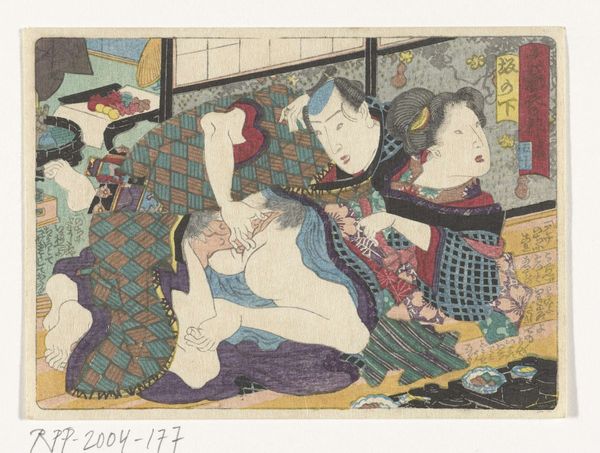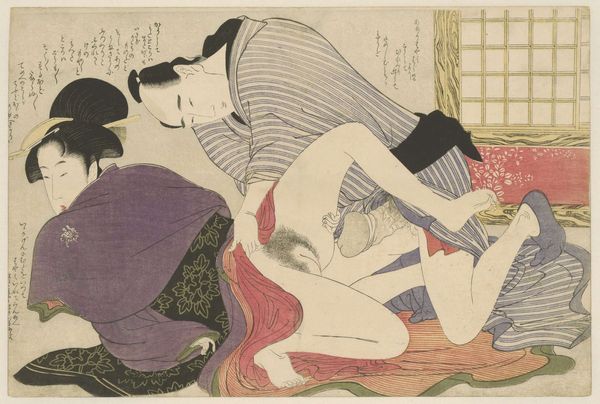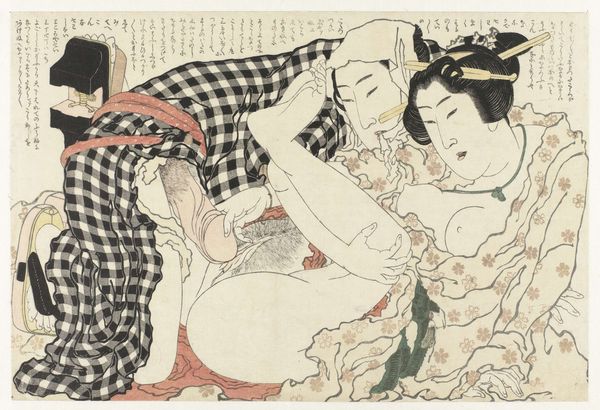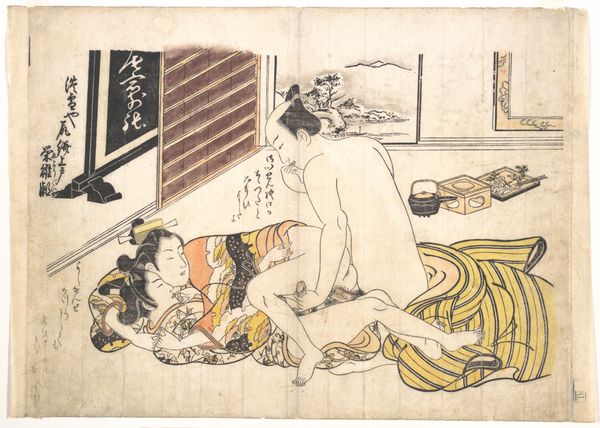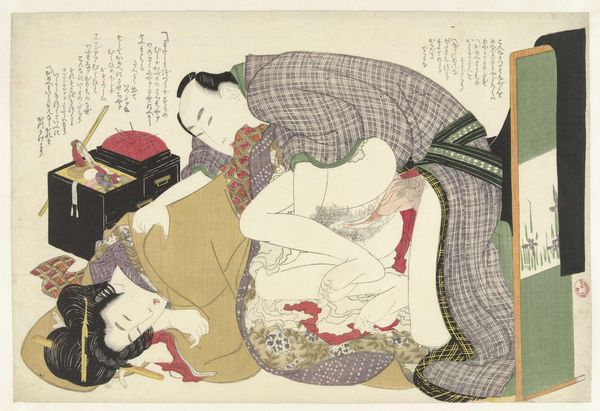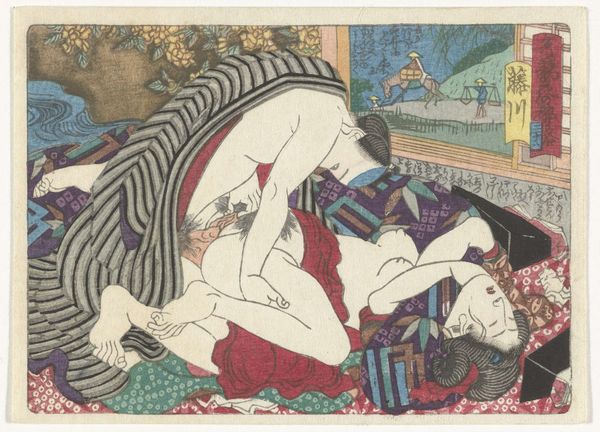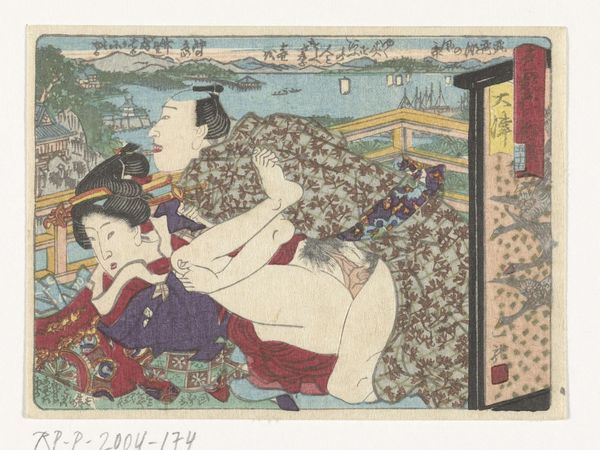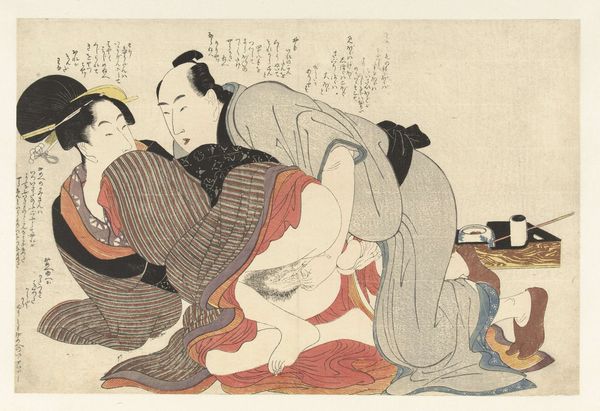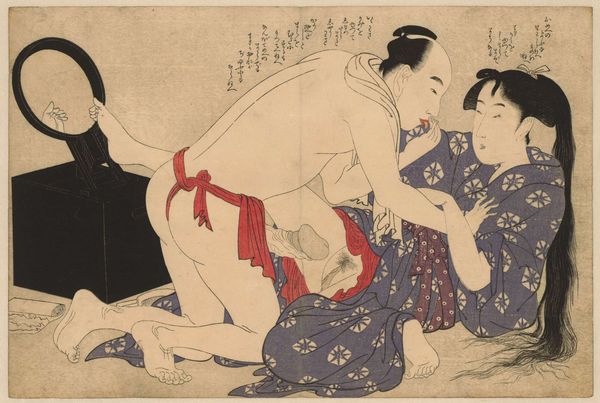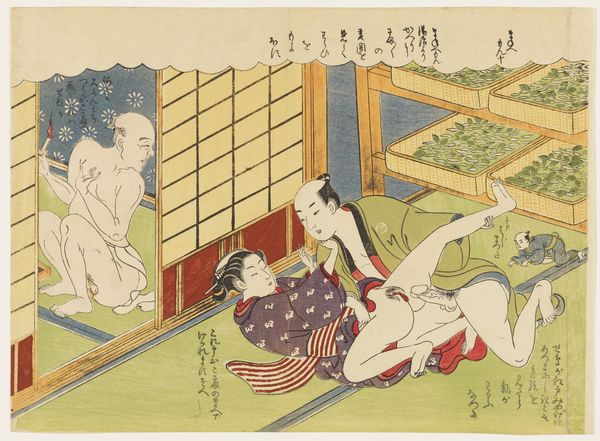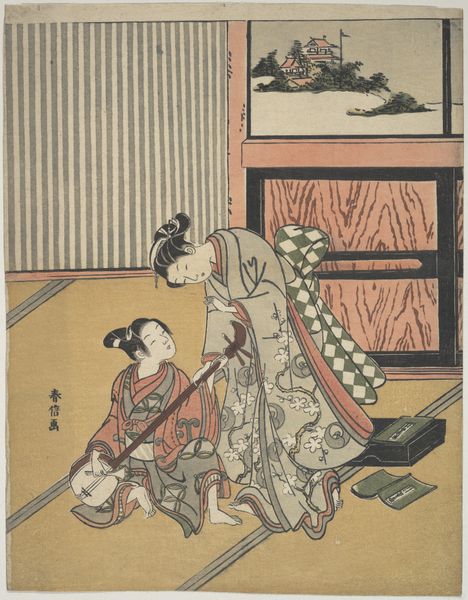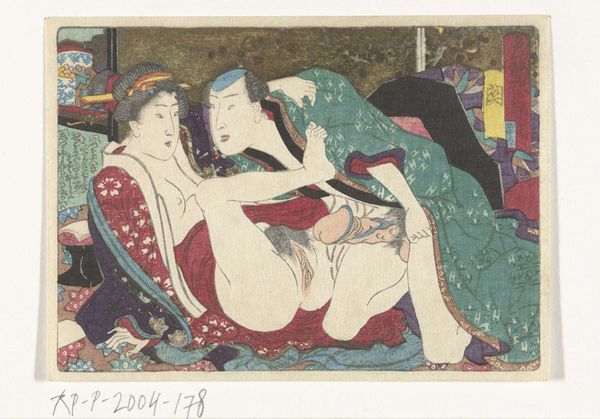
De pleisterplaats Kusatsu 1835 - 1845
utagawakunisada
Rijksmuseum
silk, print, paper, watercolor, woodblock-print
#
portrait
#
narrative-art
#
silk
# print
#
asian-art
#
ukiyo-e
#
figuration
#
paper
#
watercolor
#
woodblock-print
#
naive art
#
line
#
art nouveau
#
watercolour illustration
#
genre-painting
#
erotic-art
Dimensions: height 88 mm, width 121 mm
Copyright: Rijks Museum: Open Domain
Utagawa Kunisada created the woodblock print, "The Kusatsu Station" sometime in the 19th century, a period of great social and economic change in Japan. Kusatsu was a popular post station, a town where weary travelers could rest. This print offers us a glimpse into the intimate world of leisure and sexuality during that era. You’ll notice a man attending to two reclining women. His hands and knees are the focal point, suggesting a moment of service and perhaps even intimacy. The woman in the foreground, with her elaborate hair and serene expression, embodies the idealized beauty of the time. In the background, other travelers are being carried along, highlighting the contrast between the privileged and the working class. Kunisada presents a narrative that both celebrates and perhaps subtly critiques the social norms of the time. It invites us to consider the roles of pleasure, labor, and gender within the complex tapestry of 19th-century Japanese society, while evoking an emotional connection to the scene.
Comments
No comments
Be the first to comment and join the conversation on the ultimate creative platform.
